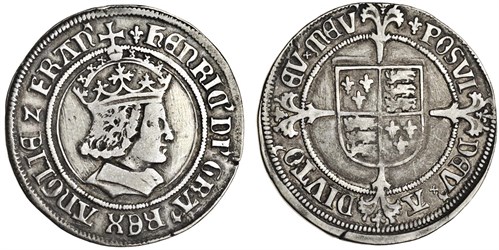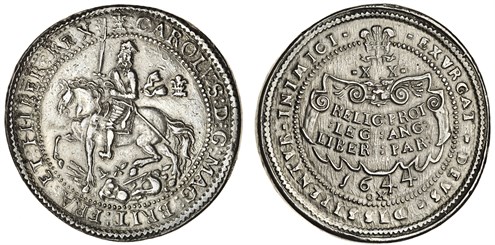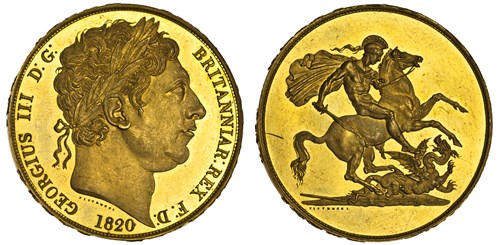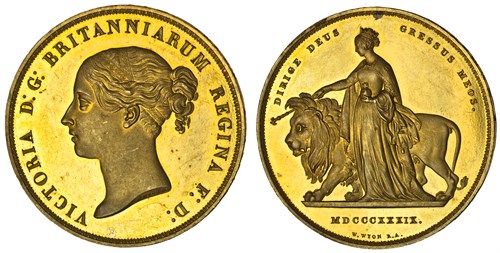The Much Awaited Second Half Of The Slaney Collection of English Coins Is Finally Coming to Auction

The Slaney Collection | 14 May 2015 | London
Spink sold the first half of the Slaney collection in May 2003. The sale was a great success, many records were broken, and the numismatic world was agog to know when the second half of the collection would be offered. After a wait of twelve years the remaining coins are coming, at last, to the auction block.
The collection was formed with great care, and at considerable expense between 1940 - 1960. Several famous collections were dispersed during these decades, and so many of the Slaney coins have impressive provenances going back into the 19th
century. The smallest coin in the collection (Lot 322, an Elizabeth I penny) has the oldest provenance, stretching back to the Tutet sale in 1786. There are many highlights, and collectors have a wealth of rarities to choose from, including early hammered coins, modern milled coins, currency coins and patterns in gold and silver.
The first of the silver coins in the sale is extremely interesting, a testoon depicting Henry VII, which some consider to be the first shilling. It is a remarkable coin because it displays the King's portrait in profile for the first time on an English coin. The continental coinages, especially the Italian coinages displayed similar portraits already because the Renaissance had already arrived. Being very rare, this is one of the best examples in private hands. Of course the reign of Henry VII ended at the beginning of the sixteenth-century, the age of the Renaissance and the Reformation. This coin could easily be seen as proof of the European influences trickling through to start the flood tide of the English Renaissance.
 |
Lot 309, Henry VII testoon, estimated: £15,000 - 20,000.
Also amongst the silver coins are two silver pound coins made during the English Civil War when Charles I had retreated from London to Oxford and erected a mint there. He needed money desperately to pay his troops fighting the Parliamentary forces, resulting in these very large pound coins.
A pound of silver had to be a large coin because the coins' weight in silver had to represent the amount of one pound. One of these coins is known to have been designed by the engraver Thomas Rowlins. The obverse shows the King on horseback trampling arms and armour beneath him, and the reverse depicts the famous declaration cartouche which symbolises the issues behind the Civil War. The King protested that he was defending the liberties and the true religion of the country, and acting in the name of liberty in Parliament. Of course, these assertions directly contradict his enemies, making this coin a fantastic piece of propaganda. The beautiful design, its interesting history, its rarity and value make it a highly desirable piece.
 |
Lot 345, Charles I Oxford Pound (1644), estimated: £60,000 - 80,000.
Not everything is so big in the Collection, and not everything is so silver. The collection contains a George III gold £5 pattern piece; the first example of this coin in England. Now of course the £5 is still made by the royal mint, but during the reign of George III it was an innovation. The coin was designed by Pistrucci, an Italian engraver, and shows St George and the Dragon, a design which is still used today, 200 years later.
 |
Lot 411, George III Five Pounds (1820), estimated: £100,000 - 120,000.
We are also delighted to offer a beautiful Queen Victoria £5 pattern piece. The design was inspired by the humility of the young Queen; when the young princess Victoria new that she was going to succeed as Queen, she was worried, saying: 'I am but a young girl, what do I know?'. The country was very sympathetic towards her. This gave William Wyon, the engraver, an idea. His design shows Una from Spencer's Faery Queen as Queen Victoria with crown and sceptre, leading the lion - the lion of Britain, who is tamed by her beauty and purity. It was quite a radical idea to represent the monarch as a fairy-tale character on the country's coinage, so it remained a pattern piece and the George and the Dragon design was used instead.
 |
Lot 418, Victoria Five-Pounds (1839), estimated: £40,000 - 50,000.
The total estimate for this second half is somewhere between £1.5 and £2 million, although many experienced collectors and dealers are predicting a total even higher than this. This will no doubt be one of the most important sales of English coins for many years. The Slaney collection in its entirety is certainly one of the most important collections to come to the market in the last 60 years.
For more information please contact:
Richard Bishop:
Tel: +44 (0)20 7563 4053 | Email: [email protected]
About Spink
Spink is the world's leading auctioneer of stamps, coins, banknotes, medals, bonds & shares, autographs, books and wine. Since its foundation in 1666, the Spink name has become synonymous with tradition, experience and integrity. Holder of royal warrants and numerous records for prices achieved at auction, Spink offers an unparalleled range of services to collectors worldwide. Headquartered in London, with offices in New York, Hong Kong, Singapore and Switzerland, Spink holds over 70 auctions a year. Catalogues can be accessed through the Spink website (www.spink.com) or via the Spink App for iPhone and iPad.



